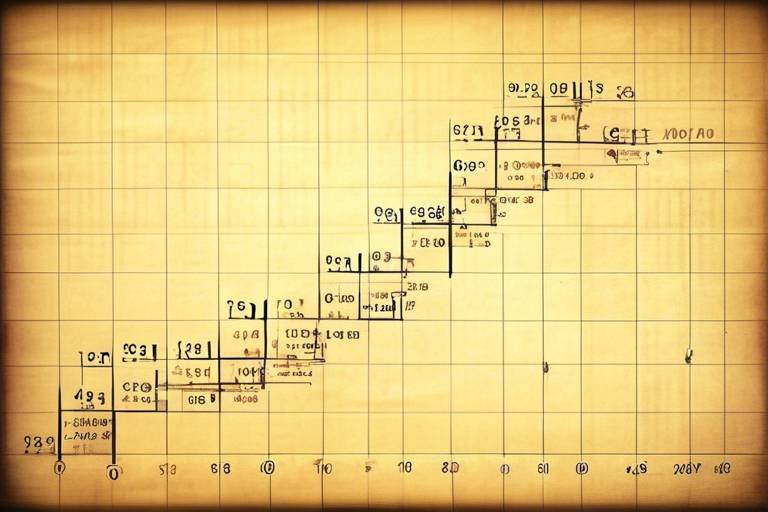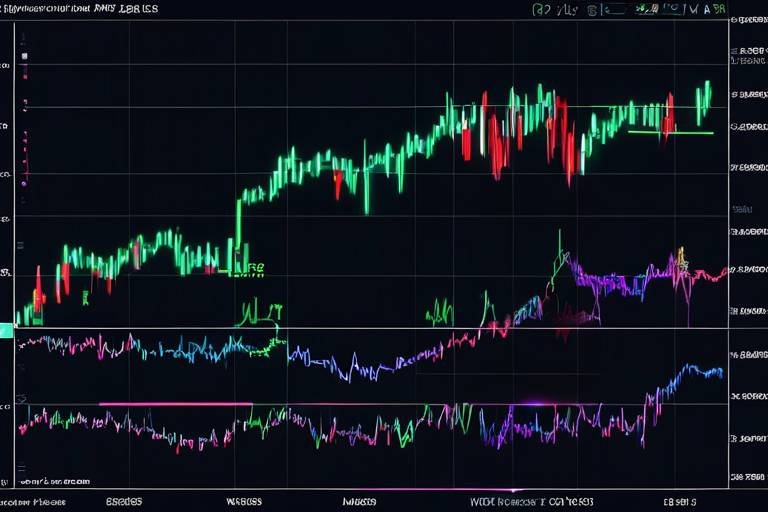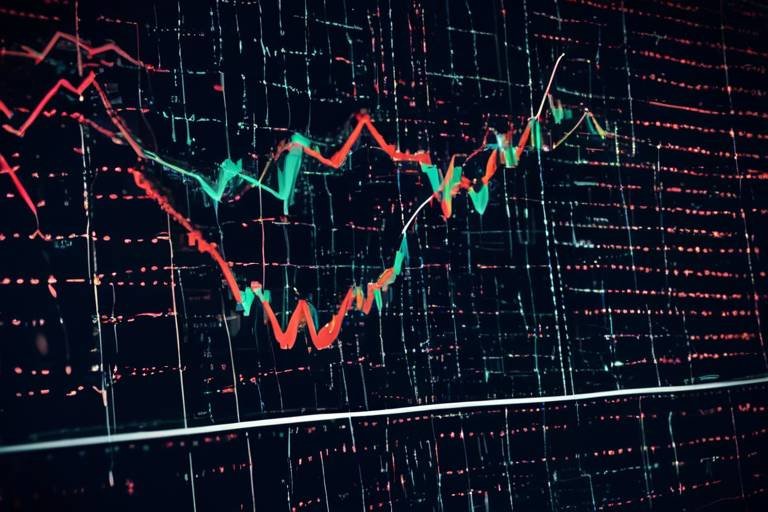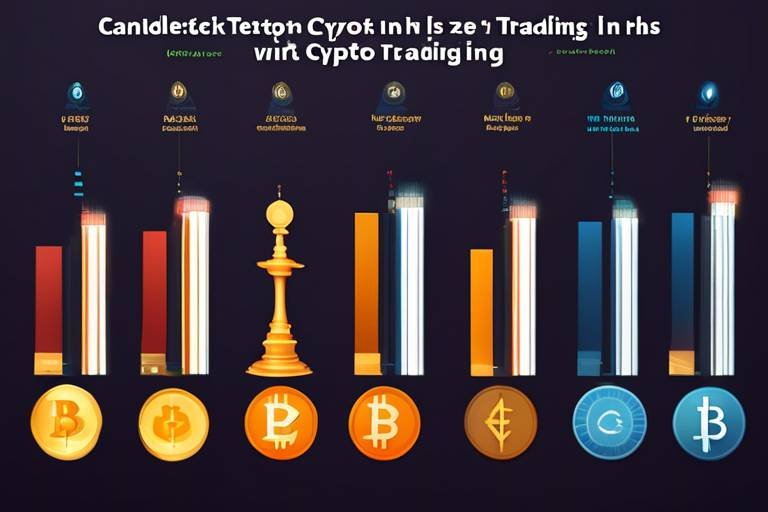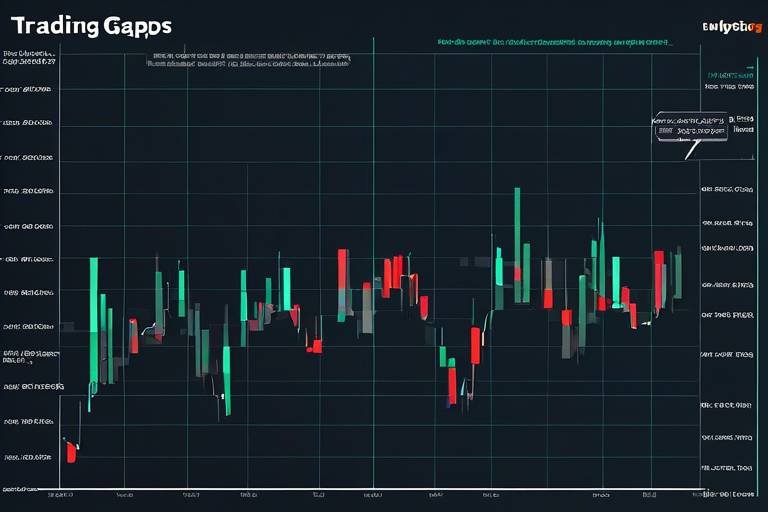Understanding Market Patterns and Their Implications
In the ever-evolving world of finance, understanding market patterns is akin to having a treasure map. It guides investors through the tumultuous seas of trading, helping them navigate potential pitfalls and seize lucrative opportunities. Market patterns are not just random occurrences; they are the footprints left behind by the collective behavior of traders and investors. By analyzing these patterns, one can gain valuable insights into future price movements, making informed decisions that can lead to financial success.
So, what exactly are market patterns? Simply put, they are recurring formations in price charts that signal potential future movements. These patterns can be classified into various categories, primarily bullish and bearish. A bullish pattern suggests that prices are likely to rise, while a bearish pattern indicates a potential decline. Understanding these classifications is crucial for traders as it helps them anticipate market behavior and adjust their strategies accordingly.
Moreover, the significance of market patterns extends beyond mere speculation. They serve as a reflection of market sentiment, which is the overall attitude of investors towards a particular security or the market as a whole. When traders recognize these patterns, they can gauge whether the market is leaning towards optimism or pessimism, allowing them to make more calculated decisions. For instance, a series of bullish patterns might indicate growing investor confidence, while bearish patterns could signal fear and uncertainty.
As we dive deeper into the world of market patterns, it's essential to recognize the role of technical analysis. This analytical approach involves studying historical price data to forecast future movements. By examining past trends and patterns, traders can identify potential entry and exit points in the market. Technical analysis is like a compass that provides direction amidst the chaos of trading, allowing investors to align their strategies with market realities.
In conclusion, understanding market patterns and their implications is fundamental for anyone looking to succeed in trading. These patterns not only provide insights into price movements but also reflect the underlying sentiment of the market. By honing the ability to recognize and interpret these patterns, traders can enhance their decision-making process and ultimately improve their chances of achieving their financial goals.
- What are market patterns? Market patterns are recurring formations in price charts that indicate potential future movements in the market.
- Why are market patterns important? They help traders anticipate price movements and make informed trading decisions based on market sentiment.
- How does technical analysis relate to market patterns? Technical analysis involves studying historical price data to recognize patterns and forecast future price movements.
- What is the difference between bullish and bearish patterns? Bullish patterns suggest that prices are likely to rise, while bearish patterns indicate a potential decline.

Types of Market Patterns
This article explores the significance of market patterns, their types, and how they influence trading decisions. We will delve into various aspects that investors must consider for successful market analysis.
Market patterns can be classified into various types, including bullish and bearish patterns. Understanding these categories helps traders identify potential price movements and make informed decisions. Think of market patterns as the fingerprints of price action; each one tells a unique story about what may happen next. Recognizing these patterns is essential for anyone looking to navigate the often turbulent waters of trading.
At the core of market analysis, traders often focus on two main types of patterns:
- Bullish Patterns: These patterns suggest that the price of an asset is likely to rise. They typically indicate a shift in market sentiment from pessimism to optimism.
- Bearish Patterns: Conversely, bearish patterns signal potential declines in asset prices, reflecting a transition from optimism to pessimism among investors.
Understanding the nuances of these patterns can significantly enhance a trader's ability to anticipate market movements. For instance, within the bullish category, patterns like the ascending triangle or the cup and handle are often seen as strong indicators of future price increases. Conversely, bearish patterns such as the descending triangle or the head and shoulders can warn traders of impending downturns.
Moreover, these patterns can be further divided into continuation patterns and reversal patterns. Continuation patterns suggest that the current trend will continue, while reversal patterns indicate a potential change in direction. This classification is crucial for traders, as it helps them align their strategies with the prevailing market conditions.
To illustrate, let's take a look at a simple table that outlines some common market patterns:
| Pattern Type | Description | Implication |
|---|---|---|
| Bullish | Patterns indicating potential price increases | Buy signals |
| Bearish | Patterns suggesting potential price declines | Sell signals |
| Continuation | Patterns indicating that the current trend will persist | Hold or add to positions |
| Reversal | Patterns indicating a potential change in trend direction | Reassess positions |
In summary, recognizing the different types of market patterns is not just about memorizing shapes or formations; it's about understanding the underlying psychology of the market participants. Each pattern reflects a collective sentiment that can provide valuable insights into future price movements. By honing the ability to identify these patterns, traders can make more informed decisions and enhance their chances of success in the market.
Technical analysis plays a crucial role in recognizing market patterns. It involves studying historical price data to forecast future movements, providing traders with valuable insights for their strategies.
Chart patterns are visual representations of price movements that indicate potential market behavior. Recognizing these patterns can aid traders in predicting future trends and reversals.
The head and shoulders pattern is a reversal pattern that signals a change in trend direction. Understanding its formation can help traders identify potential market tops and bottoms.
Double tops and bottoms are significant reversal patterns that indicate potential trend reversals. Recognizing these formations can enhance a trader's ability to make timely decisions.
Candlestick patterns provide insights into market sentiment and potential reversals. Traders often use these patterns in conjunction with other analyses to confirm their trading strategies.
Market sentiment analysis involves gauging the overall mood of investors. Understanding sentiment can help traders anticipate market movements and adjust their strategies accordingly.
The Fear and Greed Index is a tool that measures market sentiment. It helps traders assess whether the market is in a state of fear or greed, influencing their trading decisions.
News events can significantly impact market patterns. Understanding how different types of news affect market sentiment is essential for traders looking to navigate volatile conditions.
Q: What are market patterns?
A: Market patterns are identifiable formations in price charts that suggest future price movements based on historical data.
Q: How do I identify bullish and bearish patterns?
A: Bullish patterns indicate potential price increases, while bearish patterns suggest potential declines. Familiarity with common patterns helps in identification.
Q: Why is technical analysis important?
A: Technical analysis allows traders to make educated predictions about future price movements based on historical trends, improving decision-making.

Importance of Technical Analysis
When it comes to trading in the financial markets, the phrase “knowledge is power” couldn’t be more accurate. This is where technical analysis steps in, acting as a powerful tool for traders and investors alike. By analyzing historical price data, technical analysis helps traders forecast future price movements, enabling them to make informed decisions. Imagine trying to navigate through a dense fog without a GPS; that’s how trading can feel without the insights provided by technical analysis. It illuminates the path ahead, allowing traders to identify potential opportunities and risks.
One of the most compelling aspects of technical analysis is its ability to reveal market trends and potential reversals. By examining price charts and patterns, traders can spot trends that indicate whether the market is moving upwards (bullish) or downwards (bearish). This is crucial because trading against the trend can be a recipe for disaster. Just like a surfer riding a wave, successful traders know to go with the flow rather than fight against it.
Moreover, technical analysis isn't just about looking at charts; it involves a range of tools and indicators that can enhance a trader's strategy. For instance, moving averages, relative strength index (RSI), and Fibonacci retracements are just a few examples of the indicators that traders use to gain deeper insights into market behavior. These tools can help in identifying entry and exit points, making trading decisions more precise and strategic.
To further illustrate the significance of technical analysis, let’s consider a few key benefits:
- Identifying Trends: Technical analysis helps in determining the direction of the market, which is essential for making profitable trades.
- Timing Trades: By analyzing patterns and indicators, traders can better time their entries and exits, maximizing potential profits.
- Risk Management: Understanding market patterns allows traders to set appropriate stop-loss orders, reducing the risk of significant losses.
In summary, technical analysis is not just a collection of charts and data; it’s a comprehensive approach that equips traders with the knowledge they need to navigate the often-turbulent waters of the financial markets. Whether you’re a seasoned trader or just starting out, mastering technical analysis can significantly enhance your trading strategy and improve your chances of success.

Chart Patterns
Chart patterns are like the fingerprints of the market, unique and revealing. They visually represent the price movements of assets over time, helping traders to identify potential future behavior. By studying these patterns, traders can gain insights into market psychology and predict possible price trends or reversals. Think of it as reading the mood of the market; just as you can gauge someone's feelings through their expressions, you can understand market sentiment through chart patterns.
Among the most common chart patterns are the continuation patterns and reversal patterns. Continuation patterns suggest that the current trend will continue, while reversal patterns indicate a change in the trend's direction. Recognizing these patterns is crucial because they can serve as early warning signs for traders, allowing them to make informed decisions. Here’s a brief overview of some key chart patterns:
| Pattern | Type | Description |
|---|---|---|
| Head and Shoulders | Reversal | Indicates a trend change from bullish to bearish. |
| Inverse Head and Shoulders | Reversal | Indicates a trend change from bearish to bullish. |
| Double Top | Reversal | Signals a potential price reversal after an uptrend. |
| Double Bottom | Reversal | Signals a potential price reversal after a downtrend. |
| Flags and Pennants | Continuation | Indicates a brief pause in the trend before it resumes. |
Understanding these patterns can significantly enhance a trader's ability to make timely decisions. For instance, the Head and Shoulders pattern is particularly notable; it consists of three peaks, with the middle peak being the highest (the head) and the two others (the shoulders) being lower. When traders spot this formation, they often prepare for a potential market downturn.
On the other hand, the Double Top pattern is another critical indicator. This pattern occurs when the price reaches a high point twice, failing to break through, which often leads to a significant price drop. Conversely, the Double Bottom pattern is the opposite; it signifies that the price has found support at a low point twice, suggesting a potential upward reversal.
In conclusion, chart patterns are invaluable tools for traders. They not only provide visual cues about market behavior but also help in formulating strategies. By mastering the art of reading these patterns, traders can enhance their decision-making process, ultimately leading to more successful trading outcomes. Remember, though, that while chart patterns are powerful indicators, they should always be used in conjunction with other forms of analysis to confirm trading decisions.
- What are chart patterns? Chart patterns are formations created by the movement of prices on a chart, used to predict future market behavior.
- Why are chart patterns important? They help traders identify potential price movements and reversals, enabling informed trading decisions.
- Can chart patterns guarantee success in trading? No, while they are useful tools, they should be used alongside other analyses for better accuracy.
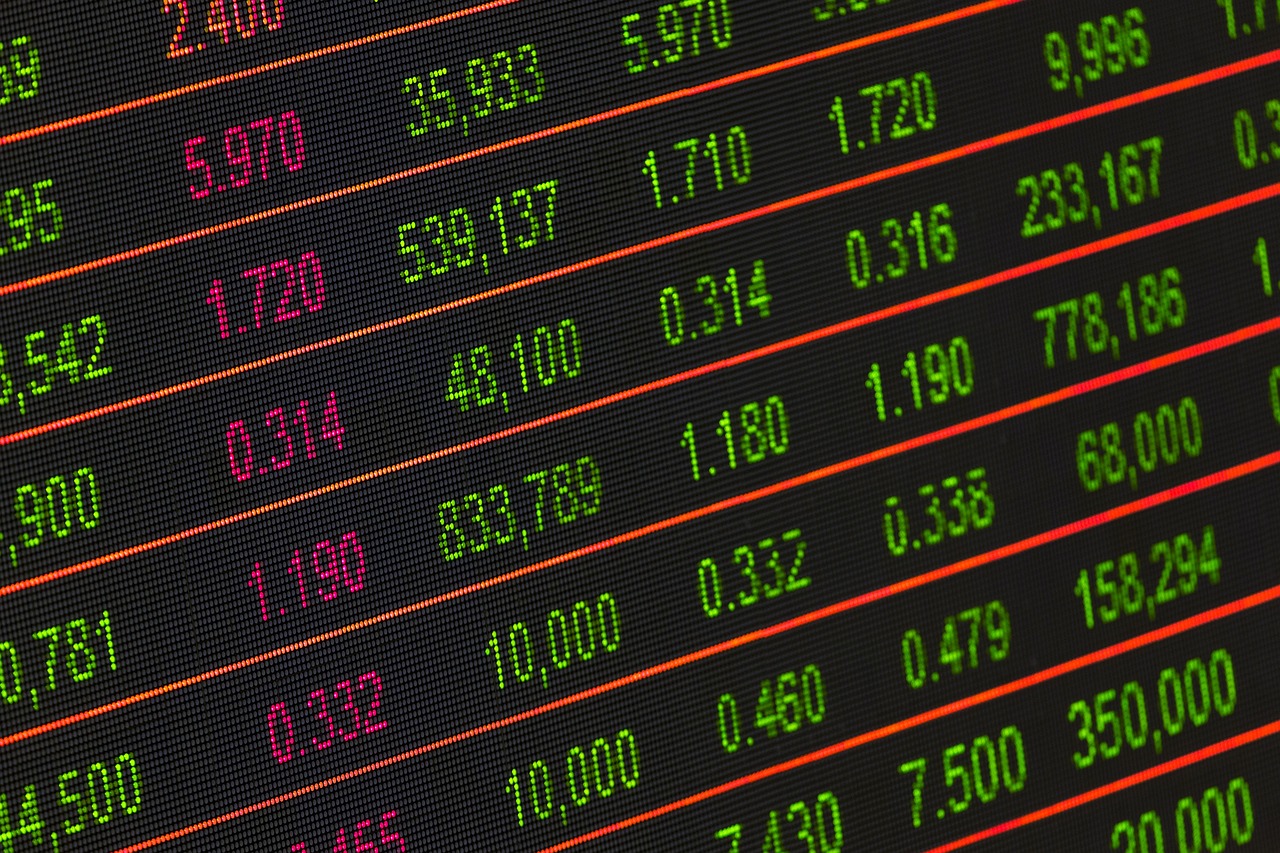
Head and Shoulders
The head and shoulders pattern is a classic indicator in technical analysis that traders often look for to identify potential reversals in market trends. This pattern typically appears after a strong price movement, signaling that the trend may be losing momentum and a reversal could be on the horizon. It comprises three peaks: the left shoulder, the head, and the right shoulder, which create a distinct shape reminiscent of a person’s silhouette. Imagine a person standing with their head held high, but then gradually slumping back down; that's the essence of this pattern.
To recognize a head and shoulders formation, traders look for specific characteristics:
- The first peak, or left shoulder, forms when the price rises and then falls back.
- The second peak, or head, is higher than the first, followed by another decline.
- The third peak, or right shoulder, is lower than the head but similar in height to the left shoulder, leading to another decline.
Once this pattern is established, the neckline is drawn by connecting the lows between the shoulders. A breakout below this neckline often signifies the completion of the pattern, indicating a potential bearish trend. Traders will typically look for confirmation through volume spikes or other indicators before making a move. The psychology behind this pattern is fascinating; it reflects the battle between buyers and sellers, where buyers initially push the price up, but sellers eventually gain control, leading to a downward trend.
It's essential for traders to practice caution when interpreting this pattern. Not every head and shoulders formation will lead to a reversal, and false signals can occur. Therefore, integrating other forms of analysis, such as volume and momentum indicators, can enhance the reliability of the head and shoulders pattern. For example, a significant increase in trading volume during the breakout can provide additional confirmation of the trend reversal.
In summary, the head and shoulders pattern is a powerful tool in a trader's arsenal. By understanding its formation and implications, traders can position themselves strategically in the market, potentially maximizing their profits while minimizing risks. However, like any trading strategy, it requires practice and patience to master.
- What does the head and shoulders pattern indicate?
The head and shoulders pattern indicates a potential reversal in trend direction, typically from bullish to bearish. - How can I confirm a head and shoulders pattern?
Confirmation can be achieved by observing a breakout below the neckline, supported by increased trading volume. - Are there variations of the head and shoulders pattern?
Yes, the inverse head and shoulders pattern is a bullish counterpart that signals a potential upward reversal.

Double Tops and Bottoms
The Double Top and Double Bottom patterns are among the most significant reversal patterns that traders encounter in the market. These formations signal potential trend reversals, making them crucial for traders looking to enter or exit positions strategically. A Double Top occurs when the price reaches a high point twice, creating a peak before reversing downward. Conversely, a Double Bottom is formed when the price hits a low point twice, indicating a potential bullish reversal. Understanding these patterns can enhance a trader's ability to make timely decisions that can lead to profitable trades.
To identify a Double Top pattern, traders should look for the following characteristics:
- Two Peaks: The first peak is followed by a pullback, and then the price rallies to form a second peak at roughly the same level as the first.
- Volume Analysis: Typically, volume should decrease during the formation of the second peak, indicating weakening momentum.
- Breakout Point: The pattern is confirmed when the price breaks below the support level established by the lowest point between the two peaks.
On the flip side, the Double Bottom pattern consists of two troughs that are approximately equal, separated by a moderate rally. The characteristics of a Double Bottom include:
- Two Troughs: The first trough is followed by a rally, and then the price dips again to form a second trough at a similar level.
- Volume Increase: Volume often increases during the breakout above the resistance level formed by the rally between the two troughs.
- Confirmation: The pattern is validated when the price breaks above the resistance level established after the second trough.
Both patterns are essential for traders as they can signify a shift in market sentiment. For instance, after a prolonged downtrend, a Double Bottom can indicate that the selling pressure is waning, and buyers are starting to take control. Similarly, a Double Top can warn traders of an impending downtrend after a bullish run. Recognizing these patterns early can provide traders with a competitive edge, allowing them to capitalize on potential market movements.
In the world of trading, understanding the psychology behind these patterns is just as important as recognizing their technical formations. The Double Top reflects a struggle between buyers and sellers, where sellers ultimately gain the upper hand after the second peak. On the other hand, the Double Bottom illustrates a battle where buyers step in, overpowering sellers after the second trough. This psychological aspect can offer traders valuable insights into market dynamics and help them make more informed trading decisions.
In summary, mastering the identification and interpretation of Double Tops and Bottoms can significantly enhance a trader's toolkit. By incorporating these patterns into a broader trading strategy that includes other technical indicators and market analysis, traders can improve their chances of success in navigating the complex world of financial markets.

Candlestick Patterns
Candlestick patterns are not just pretty pictures on a chart; they are powerful tools that reveal the underlying emotions of traders and investors. Each candlestick represents a specific time frame, showing the open, close, high, and low prices. When you look at these patterns, you’re not just observing price movements—you’re witnessing the battle between buyers and sellers. Understanding these patterns can give you an edge in predicting potential market reversals or continuations.
There are several key candlestick patterns that traders often rely on. For instance, the Doji candlestick, which forms when the opening and closing prices are virtually the same, suggests indecision in the market. This pattern can be a precursor to a significant price movement, signaling that traders are uncertain about the market's direction. On the other hand, a Hammer pattern, which has a small body and a long lower shadow, indicates that buyers are stepping in after a price decline, suggesting a potential reversal to the upside.
| Pattern Name | Description | Implication |
|---|---|---|
| Doji | Indicates indecision in the market. | Potential reversal or continuation. |
| Hammer | Small body with a long lower shadow. | Potential bullish reversal. |
| Engulfing | A larger candle engulfs the previous one. | Strong reversal signal. |
| Morning Star | A three-candle pattern indicating a reversal. | Potential bullish reversal. |
Moreover, combining candlestick patterns with other technical indicators can enhance your trading strategy. For example, if you spot a Bullish Engulfing pattern near a support level, and it coincides with an oversold condition on the Relative Strength Index (RSI), it strengthens the case for a potential upward move. This synergy between different forms of analysis can significantly improve your chances of success in the market.
In summary, mastering candlestick patterns is essential for any trader looking to navigate the complexities of the market. They provide critical insights into market sentiment and potential price movements, allowing traders to make informed decisions. So, the next time you glance at a candlestick chart, remember: you’re not just looking at numbers; you’re interpreting the very emotions that drive the market!
- What are candlestick patterns?
Candlestick patterns are formations created by one or more candlesticks on a price chart that indicate potential market behavior and sentiment.
- How do I identify candlestick patterns?
To identify candlestick patterns, look for specific formations like Doji, Hammer, or Engulfing patterns that suggest potential price movements.
- Can candlestick patterns predict market movements?
While they can provide insights into market sentiment and potential reversals, no pattern guarantees market movements. It's essential to use them in conjunction with other analyses.
- What is the best time frame for candlestick patterns?
The best time frame depends on your trading strategy. Short-term traders may prefer 5-minute or hourly charts, while long-term investors might look at daily or weekly charts.
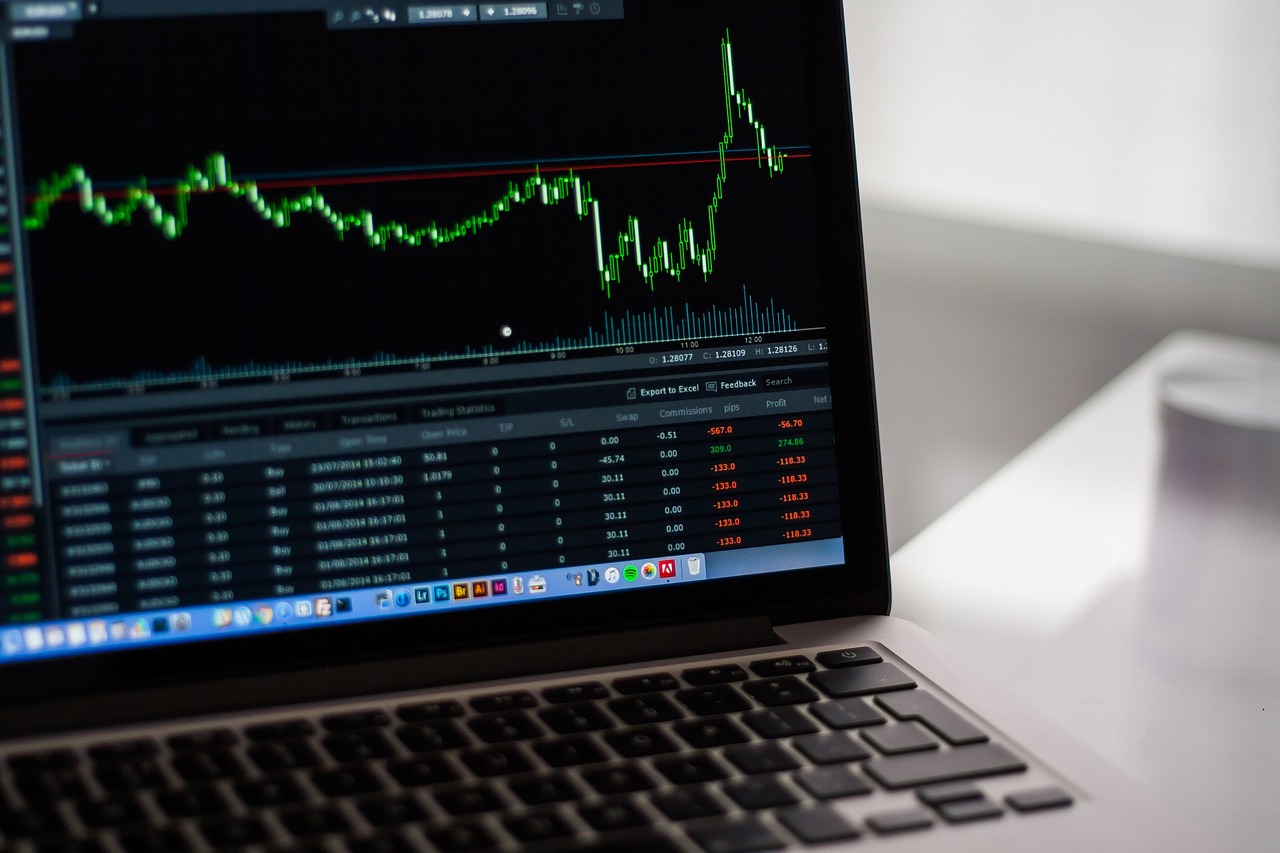
Market Sentiment Analysis
Market sentiment analysis is like tuning into the collective heartbeat of investors. It’s all about understanding the mood that prevails in the market, which can often be as unpredictable as the weather. Just like you might check the forecast before planning a picnic, traders must gauge market sentiment to anticipate potential price movements. Are investors feeling optimistic, or is there a cloud of fear hanging over the market? This emotional undercurrent can significantly influence trading decisions.
To truly grasp market sentiment, it’s essential to consider various factors that contribute to the overall mood. These factors can include economic indicators, geopolitical events, and even social media trends. For instance, if a major economic report shows unexpected growth, it might spark a wave of optimism, leading to bullish patterns. Conversely, negative news, such as political instability or poor earnings reports, can create a sense of panic, resulting in bearish patterns.
One of the most valuable tools in assessing market sentiment is the Fear and Greed Index. This index serves as a barometer of investor emotions, measuring the balance between fear and greed in the market. It provides a snapshot of whether the market is overly optimistic or pessimistic. By analyzing this index, traders can make more informed decisions about when to enter or exit trades. For example:
| Index Level | Market Sentiment | Implication for Traders |
|---|---|---|
| 0-25 | Extreme Fear | Potential buying opportunity |
| 26-50 | Fear | Consider caution in trades |
| 51-75 | Greed | Market may be overbought; consider selling |
| 76-100 | Extreme Greed | High risk of market correction |
Understanding sentiment is not just about numbers and charts; it’s about reading the room. Traders often look for signs of shifts in sentiment, which can indicate potential market reversals. For instance, if an overwhelmingly positive sentiment suddenly shifts to fear, it could signal an impending downturn. This is where the art of market sentiment analysis comes into play, combining data-driven insights with human intuition.
Moreover, it’s crucial to recognize how news events can sway market sentiment dramatically. Major announcements, such as interest rate changes or geopolitical developments, can send ripples through the market. Traders who stay updated on current events and their potential impacts are better positioned to navigate these turbulent waters. For example, a surprise announcement from a central bank can lead to immediate and significant price movements, making it vital for traders to be prepared.
In conclusion, market sentiment analysis is an indispensable tool for traders looking to enhance their strategies. By understanding the emotional landscape of the market, traders can make more informed decisions, whether they are looking to capitalize on bullish trends or protect themselves from bearish downturns. Remember, the market is not just a series of numbers; it’s a reflection of human behavior and emotions.
- What is market sentiment analysis? Market sentiment analysis is the study of the overall mood of investors in the market, which can influence price movements.
- How does the Fear and Greed Index work? The Fear and Greed Index measures the balance between fear and greed in the market, helping traders assess market sentiment.
- Why is market sentiment important for traders? Understanding market sentiment can help traders anticipate price movements and make informed trading decisions.
- How can news events impact market sentiment? News events can create significant shifts in investor sentiment, leading to rapid price changes.

Fear and Greed Index
The is an intriguing tool that captures the emotional pulse of the market. Imagine it as a mood ring for investors, fluctuating between the extremes of fear and greed. This index provides a snapshot of market sentiment, which is crucial for traders looking to navigate the often turbulent waters of financial markets. When investors are feeling greedy, they tend to buy more aggressively, pushing prices up. Conversely, when fear takes hold, selling becomes rampant, leading to price declines. Understanding this index can be a game-changer for your trading strategy.
So, how does this index work? It compiles data from various sources to gauge market sentiment across several factors. Here’s a brief overview of what it measures:
- Market Momentum: Examines the speed of price changes.
- Stock Price Strength: Looks at the number of stocks hitting new highs versus new lows.
- Put and Call Options: Analyzes the volume of options trades to gauge investor sentiment.
- Junk Bond Demand: Measures the appetite for riskier investments.
- Market Volatility: Assesses the fluctuations in market prices.
- Safe Haven Demand: Looks at the performance of gold and other safe-haven assets.
The index is typically scored on a scale from 0 to 100, where 0 indicates extreme fear and 100 indicates extreme greed. A reading below 20 suggests that investors are in a state of panic, while a reading above 80 signals that they are overly confident. This information can be invaluable for traders, as it often precedes market corrections. For instance, if the index is hovering around the 80 mark, it might be wise to consider pulling back on risky investments, as a market correction could be on the horizon.
Moreover, the Fear and Greed Index is not just a standalone tool; it works best when combined with other forms of analysis. For example, if the index indicates extreme greed but technical indicators suggest overbought conditions, it may be a signal to take profits or consider short positions. Conversely, if fear is rampant but fundamentals remain strong, it might present a buying opportunity.
In conclusion, the Fear and Greed Index serves as a vital barometer for understanding market sentiment. By keeping an eye on this index, traders can make more informed decisions, potentially increasing their chances of success in the markets. Remember, in trading, knowledge is power, and understanding the emotional landscape of the market can give you the edge you need.
- What does a high Fear and Greed Index indicate?
A high index reading suggests that investors are feeling overly confident, which may lead to market corrections. - How often is the Fear and Greed Index updated?
The index is typically updated daily, reflecting the latest market conditions. - Can the Fear and Greed Index predict market crashes?
While it can provide insights into investor sentiment, it should be used in conjunction with other analyses for better accuracy.

Impact of News on Market Patterns
When it comes to trading, the can be both profound and immediate. Imagine you're watching a calm lake, and suddenly a stone is thrown in. The ripples spread out, altering the surface in ways that are unpredictable. This is akin to how news can disrupt market stability, sending prices soaring or plummeting based on the information released. Traders must stay alert to various news events, as they can serve as catalysts for significant market movements.
News can be categorized into several types, each with its own potential to influence market patterns:
- Economic Reports: These include data releases such as employment figures, GDP growth, and inflation rates. For instance, a surprising rise in unemployment can lead to a bearish market sentiment, while positive GDP growth can create bullish momentum.
- Corporate News: Earnings reports, mergers, and acquisitions can dramatically affect individual stocks and even entire sectors. A company announcing better-than-expected earnings can see its stock price skyrocket.
- Geopolitical Events: Political instability, elections, or international conflicts can create uncertainty in the markets. Traders often react swiftly to these events, which can lead to heightened volatility.
- Central Bank Announcements: Decisions made by central banks regarding interest rates or monetary policy can have a ripple effect across global markets. An unexpected rate hike can lead to a sell-off, while a rate cut might encourage buying.
Understanding the relationship between news and market patterns is crucial for traders. For example, following a major economic announcement, markets often experience increased volatility. Traders who can interpret the implications of news quickly can position themselves advantageously. However, it’s essential to remember that not all news will have the same impact; the context and the market’s current sentiment play significant roles. A piece of news that might cause a stir in one market might be met with indifference in another.
To illustrate this, consider the following table that summarizes the types of news and their potential impacts on market patterns:
| Type of News | Potential Impact on Market Patterns |
|---|---|
| Economic Reports | Can lead to significant price movements based on the data's surprise factor. |
| Corporate News | May cause sharp rises or falls in stock prices, especially for the affected company. |
| Geopolitical Events | Often leads to increased market volatility and uncertainty. |
| Central Bank Announcements | Can drive market trends, affecting currencies, stocks, and bonds. |
In essence, the news acts as a double-edged sword in the trading world. While it can provide opportunities for profit, it can also lead to significant losses if not properly understood. Traders must develop a keen sense of timing and an ability to analyze news in the context of existing market patterns. By doing so, they can better navigate the turbulent waters of the financial markets and make informed decisions that align with their trading strategies.
- How can I stay updated on relevant news that impacts market patterns?
Utilizing financial news websites, subscribing to newsletters, and following economic calendars can help keep you informed. - What should I do if a major news event occurs while I am trading?
It's crucial to have a plan in place. Consider setting stop-loss orders and be prepared to react quickly to market changes. - Can I predict market movements based on news alone?
No, while news can influence market patterns, it's essential to combine this information with technical and fundamental analysis for more accurate predictions.
Frequently Asked Questions
- What are market patterns?
Market patterns are recognizable formations that occur in price charts, indicating potential future price movements. They can signal whether a market is bullish (rising) or bearish (falling), helping traders make informed decisions.
- How can I identify bullish and bearish patterns?
Bullish patterns, like the ascending triangle or cup and handle, suggest that prices are likely to rise. Bearish patterns, such as the descending triangle or head and shoulders, indicate potential price declines. Familiarizing yourself with these patterns through charts can significantly improve your trading strategy.
- What is the importance of technical analysis?
Technical analysis is crucial because it allows traders to study historical price data and identify trends and patterns. By analyzing this data, traders can make educated predictions about future market movements, enhancing their chances of success in trading.
- Can you explain the head and shoulders pattern?
The head and shoulders pattern is a classic reversal pattern that signals a change in trend direction. It consists of three peaks: a higher peak (head) between two lower peaks (shoulders). Recognizing this formation can help traders identify potential market tops.
- What are double tops and bottoms?
Double tops and bottoms are significant reversal patterns that indicate potential trend reversals. A double top occurs after an uptrend and signals a potential price decline, while a double bottom appears after a downtrend, suggesting a price increase. Spotting these patterns can enhance a trader's decision-making process.
- How do candlestick patterns work?
Candlestick patterns provide insights into market sentiment and potential reversals. Each candlestick represents price movement over a specific time frame, and patterns like doji or hammer can signal changes in buyer or seller strength, aiding traders in confirming their strategies.
- What is market sentiment analysis?
Market sentiment analysis involves gauging the overall mood of investors in the market. By understanding whether the market is driven by fear or greed, traders can anticipate potential price movements and adjust their strategies accordingly.
- What is the Fear and Greed Index?
The Fear and Greed Index is a tool that measures market sentiment, helping traders assess whether the market is in a state of fear or greed. This index can influence trading decisions, as extreme fear may indicate a buying opportunity, while extreme greed could signal a market correction.
- How does news impact market patterns?
News events can have a significant impact on market patterns, often causing volatility. Understanding how different types of news—such as economic reports or geopolitical events—affect market sentiment is essential for traders looking to navigate these fluctuations effectively.





